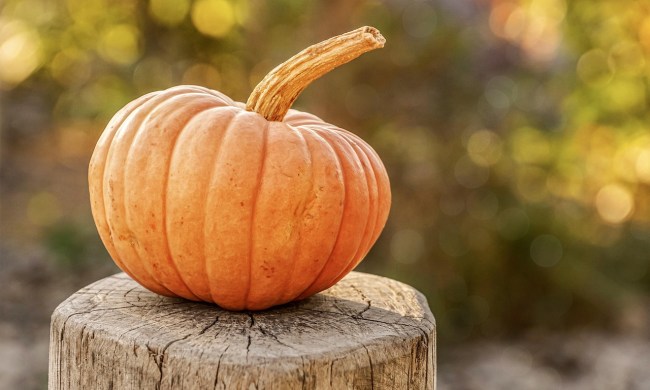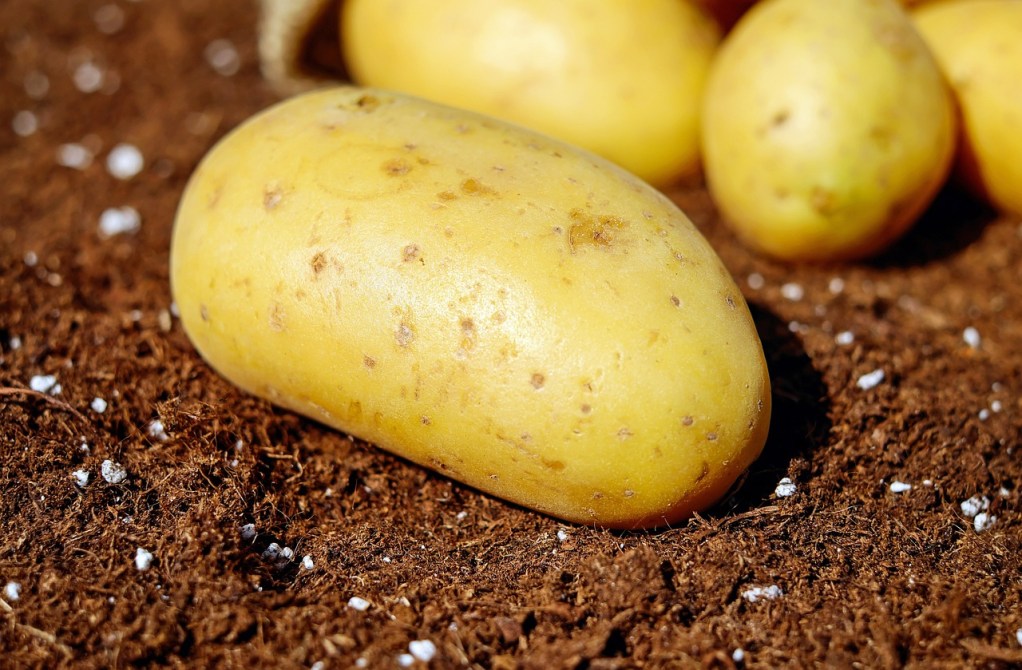
Potatoes are one of the most versatile vegetables, with a nearly infinite number of ways to cook and season them. They’re also incredibly easy to grow and typically have large yields, so you can harvest plenty of potatoes even if you only have a single plant. How soon after planting can you expect that harvest, though? How do you know if a potato is ready to be harvested or if it needs more time? This guide will answer all your questions about how and when to harvest potatoes.
When is potato harvest season?
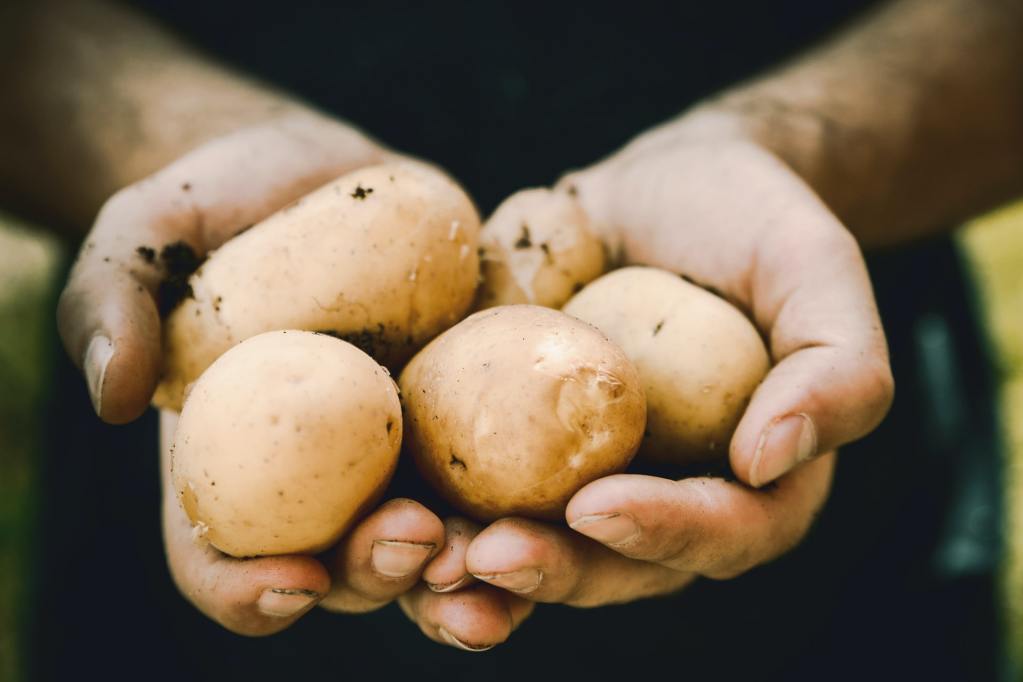
Depending on the type of potato you’re growing, harvest season ranges from late summer through fall. However, new potatoes can be harvested throughout summer. New potatoes, also called baby potatoes or early potatoes, are ones that have not fully matured. They are smaller but still delicious! Since they aren’t fully developed, they can be harvested at any point in the summer.
Fully mature potatoes, also called storage potatoes, are typically harvested beginning in July and continuing through October. It generally takes potatoes 80 to 100 days after planting to be ready for harvesting, while new potatoes can be harvested after around 60 days.
How to tell if potatoes are ready to be harvested
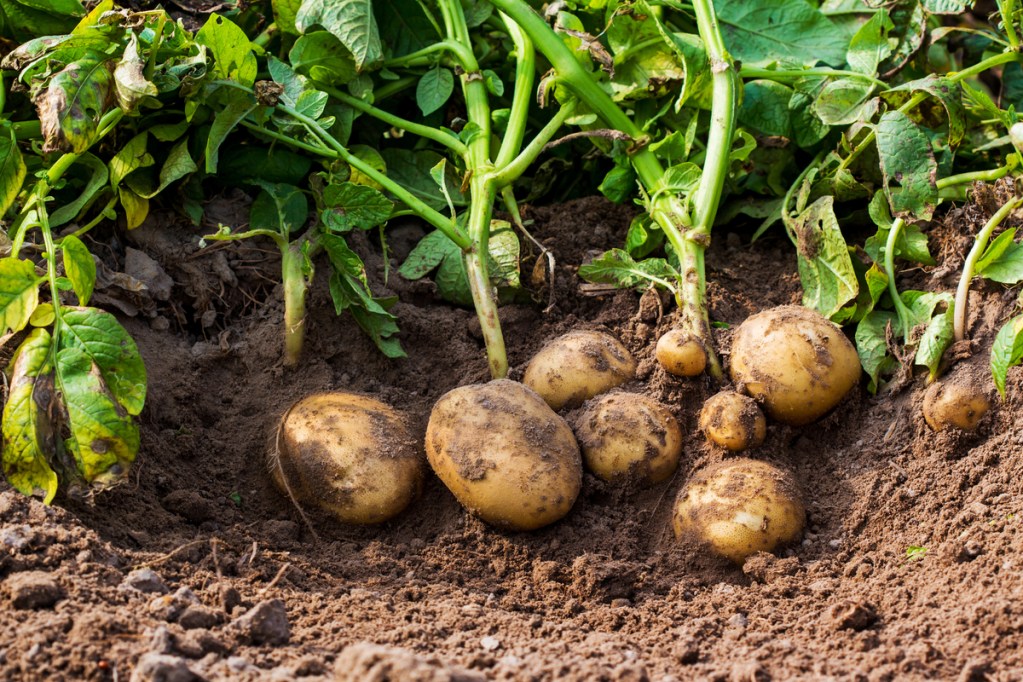
Unlike with some fruits and vegetables, potatoes can be harvested before they are fully grown. This makes timing your harvest less stressful, since the worst-case scenario for harvesting your potatoes too soon is that the potatoes are a little smaller than ideal. If you want your potatoes to be as big as they possibly can be, then wait until the leaves of the potato plant wilt.
When the plant starts to die back in the fall, with leaves that are yellow or brown, wilted, and dry to touch, then your potatoes are at their peak size. For the biggest potatoes, wait until the leaves are fully wilted. However, if you’re feeling a bit impatient, you can start harvesting mature potatoes when the leaves are only partially wilted.
How to harvest potatoes
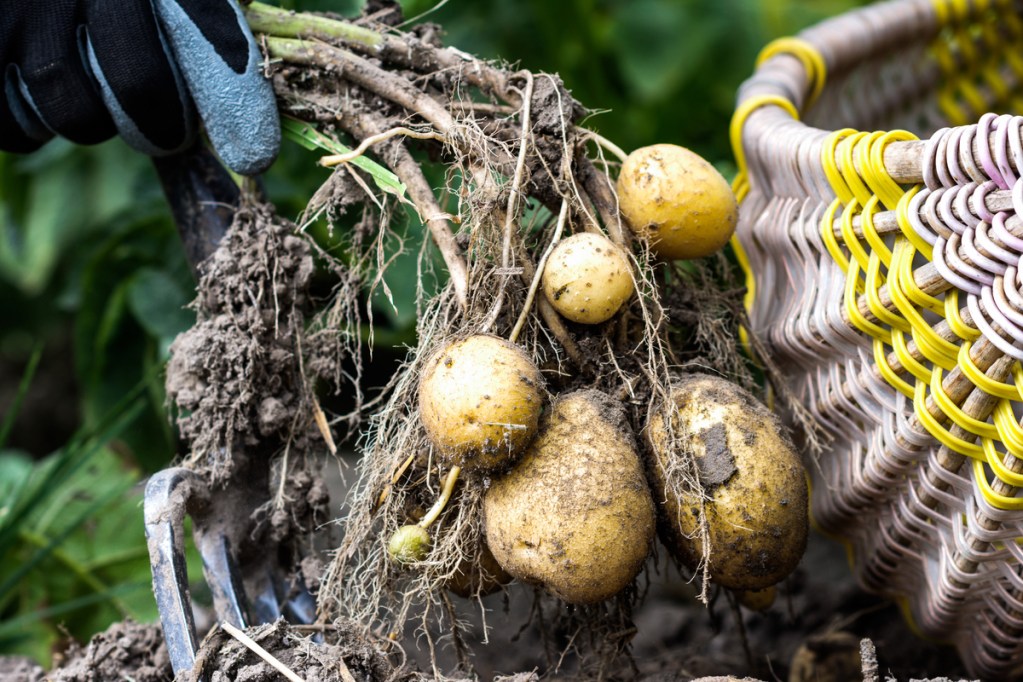
It’s typically easiest to harvest all your potatoes at once, but you can harvest your potatoes in more than one session if you’re careful. Since potatoes grow along the roots, harvesting too often can stress out your potato plant, so it’s best to space any additional harvests to give your plant time to recover. Two harvest sessions — one for baby potatoes and one for mature potatoes — is safe, but you should be careful when adding additional sessions on top of that.
If you’re not harvesting all the potatoes at once, dig carefully at the base of the plant to uncover the potatoes. Go slowly to avoid damaging the stem or roots of the plant, and be sure the plant has enough support to keep it from falling over. Choose the potatoes you want to harvest, then gently but firmly pull or cut them away from the plant.
Harvesting all the potatoes at once is much easier, as you can simply dig up the entire plant. While potatoes are perennials, they are typically grown as annuals. Harvesting an entire crop of potatoes while leaving the plant alive can be tricky, and they are quite sensitive to cold weather.
Now that you know how and when to harvest potatoes, hopefully, it will be easier to wait for these delicious tubers to be done growing. Of course, if you can’t wait that long, you can always harvest a few baby potatoes to eat in the meantime! Before you know it, you’ll have plenty of potatoes ready to harvest, cook, and enjoy. Not to mention some leftovers to put in storage. Whether you prefer them baked, mashed, or boiled, you’re sure to enjoy a hearty harvest!


